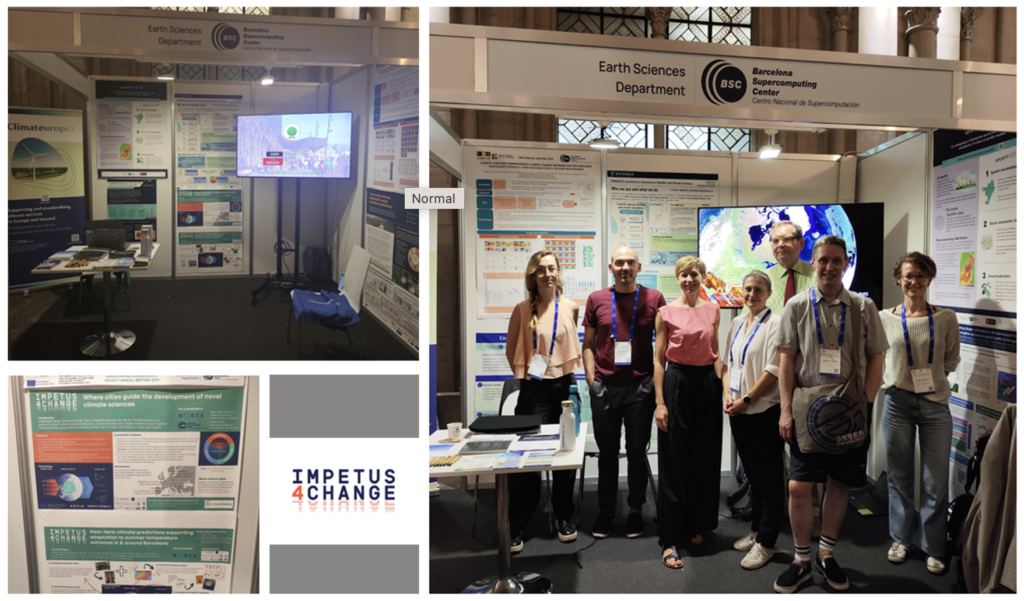EMS 2024: A Strong I4C presence at the European Meteorological Society Annual Conference
Last week the I4C team came in full force at the European Meteorological Society’s (EMS) annual conference. Hosted in the Historic Building of the University of Barcelona, the conference provided an ideal backdrop for discussions on resilient and just urban planning, key themes of I4C’s research.
The EMS annual conference draws around 600 attendees from 38 Member Societies and 30 Associate Members across Europe. I4C’s participation was crucial, as it allowed us to showcase our work on climate resilience and urban adaptation to a diverse audience of experts, fostering collaboration and driving forward innovative solutions across the continent.
Read on for more information about the I4C team members who contributed to the discussions and key takeaways from this impactful event.
A STAGE FOR I4C DEMONSTRATORS
Despite the packed schedule, the conference was well-structured, ensuring strong attendance for each session, typically drawing 30-40 experts.
I4C demonstrator cities played leading roles throughout the week. On Monday, Tomas Halenka, of Charles University in Prague and the lead for I4C’s Prague demonstrator city, chaired an early session on public education and training.
The week concluded with a session co-convened by Dragana Bojovic (I4C co-production coordinator and I4C Barcelona demonstrator city lead), Eulàlia Baulenas (Barcelona Supercomputing Center), and Sam Pickard (Barcelona Supercomputing Center), addressing the critical topic of scale in climate services.
Several I4C-related presentations were also made during the week that showcased the project’s progress improving the quality and accessibility of climate information in cities and regions. Stephen Outten (NERSCNE) had the chance to reveal I4C’s newly developed hazard indices, tailored for stakeholders.
I4C also weighed in on discussions around how to empower stakeholders and improve the quality of climate information. Marta Bruno Soares (NORCE) presented her findings on European adaptation knowledge networks, and Stephanie Mayer, from NORCE and I4C Bergen demonstrator city lead, explored how Bergen’s decision-makers are addressing the challenge of interpreting climate information across different scales.
TAKING STOCK OF THE WEEK
In summary, EMS 2024 was an intense and productive 5 days. These types of events are important not just for I4C but other EU-funded research and innovation projects because they foster exchanges, discussions and connections beyond the event itself.
Beyond the sessions, I4C’s work was showcased alongside other EU and national projects by the Barcelona Supercomputing Center (BSC) Earth Sciences department. I4C also featured in the EMS booth and during official visits to BSC’s state-of-the-art Mare Nostrum 5 supercomputer. The I4C team members were involved in other projects, further enhancing networking opportunities and fostering stronger ties within the I4C community.
According to Sam Pickard, “While we are still digesting the wealth of discussions and following up on the numerous connections made, it was a fantastic opportunity to meet in person, exchange insights across work packages, and showcase the growing body of work emerging from I4C.”
For more information on any of the topics presented, please feel free to reach out to the relevant scientists and click on the relevant sessions mentioned above. We look forward to continuing the conversation and hope to see you at EMS 2025 in Ljubljana!

